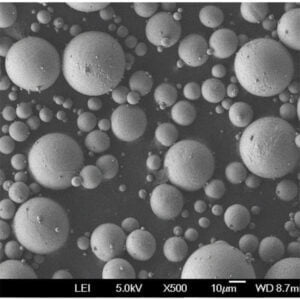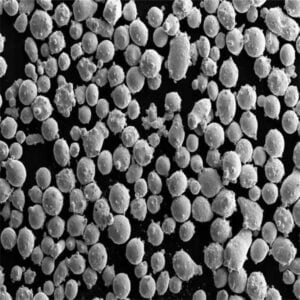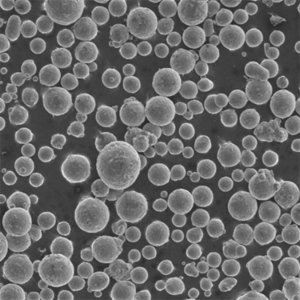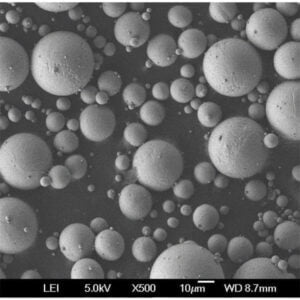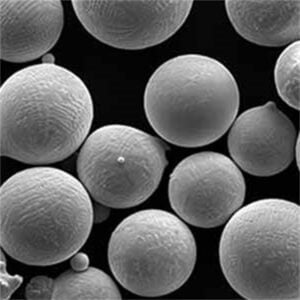직접 에너지 증착(DED)
목차
직접 에너지 증착(DED) 는 금속 제조 분야에 혁명을 일으키고 있는 정교한 적층 제조 기술입니다. 이 글에서는 숙련된 엔지니어, 호기심 많은 기술 애호가, 3D 프린팅에 처음 입문하는 사람 모두에게 DED의 모든 측면을 안내합니다. 기초부터 고급 응용 프로그램까지 친근한 대화 형식으로 모든 것을 다룹니다.
지향성 에너지 증착(DED) 개요
직접 에너지 증착은 레이저, 전자빔 또는 플라즈마 아크와 같은 집중된 에너지원을 사용하여 금속 분말 또는 와이어와 같은 재료를 녹이는 공정입니다. 이렇게 녹은 재료를 필요한 곳에 한 층씩 정확하게 증착하여 3차원 물체를 만듭니다. 첨단 용접 공정과 비슷하지만 극도로 정밀하고 제어할 수 있다고 생각하면 됩니다.
지향성 에너지 증착(DED) 시스템의 유형
DED 시스템은 사용되는 에너지원과 재료에 따라 크게 달라질 수 있습니다. 자세한 내용은 다음과 같습니다:
| 유형 | 에너지원 | 재질 | 주요 특징 |
|---|---|---|---|
| 레이저 기반 DED | 레이저 | 금속 분말/와이어 | 고정밀, 뛰어난 표면 마감, 다용도 |
| 전자 빔 DED | 전자빔 | 금속 분말/와이어 | 높은 에너지 효율, 고융점 금속에 적합 |
| 플라즈마 아크 DED | 플라즈마 아크 | 금속 분말/와이어 | 비용 효율적이고 견고하며 대형 부품에 적합합니다. |
각 유형에는 장단점이 있어 다양한 용도에 적합합니다. 예를 들어 레이저 기반 시스템은 정밀도가 뛰어나 항공우주 부품에 적합하고, 플라즈마 아크 시스템은 대형 부품 생산에 비용 효율적이라는 점에서 선호됩니다.
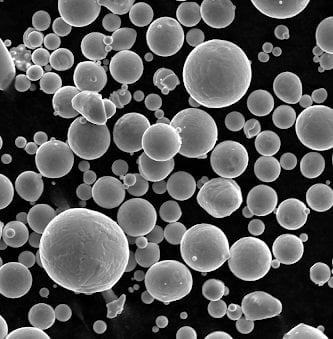
직접 에너지 증착을 위한 금속 분말 모델
올바른 금속 분말을 선택하는 것은 DED 공정의 성공을 위해 매우 중요합니다. 다음은 DED에 사용되는 10가지 인기 금속 분말과 그 설명입니다:
- 인코넬 718: 고강도 및 내식성으로 잘 알려진 니켈-크롬 합금으로 항공우주 및 고온 응용 분야에 이상적입니다.
- Ti-6Al-4V(티타늄 5등급): 이 티타늄 합금은 중량 대비 강도가 높고 내식성이 뛰어나 항공 우주 및 생의학 분야에서 일반적으로 사용됩니다.
- 스테인리스 스틸 316L: 내식성이 우수하고 기계적 특성이 우수한 오스테나이트계 스테인리스강으로, 해양 및 의료용으로 많이 사용됩니다.
- AlSi10Mg: 자동차 및 항공 우주 산업에서 널리 사용되는 강도와 열적 특성이 좋은 알루미늄 합금입니다.
- 코발트-크롬(CoCr): 높은 내마모성과 생체 적합성으로 치과 및 정형외과용 임플란트에 적합한 것으로 알려져 있습니다.
- 공구강 H13: 인성 및 내열성이 뛰어난 열간 가공용 공구강으로 다이캐스팅 및 압출 용도에 이상적입니다.
- 구리(Cu): 전기 및 열 전도성이 뛰어나 전기 부품 및 열교환기에 사용됩니다.
- 니켈 합금 625: 강도가 높고 산화 및 부식에 강한 니켈 기반 초합금으로, 화학 처리 및 해양 분야에 적합합니다.
- 마레이징 스틸: 높은 강도와 인성으로 잘 알려져 있으며 항공우주 및 툴링 분야에서 일반적으로 사용됩니다.
- 알루미늄 7075: 항공우주 및 군사 분야에서 자주 사용되는 고강도 알루미늄 합금입니다.
응용 직접 에너지 증착(DED)
DED 기술은 다양한 산업 분야에서 폭넓게 활용되고 있습니다. 가장 일반적으로 사용되는 몇 가지 사례를 살펴보세요:
| 애플리케이션 | 산업 | 예제 |
|---|---|---|
| 항공우주 | 항공우주 | 터빈 블레이드, 구조 부품 |
| 의료 | 바이오메디컬 | 맞춤형 임플란트, 보철물 |
| 자동차 | 자동차 | 엔진 부품, 프로토타입 부품 |
| 툴링 | 제조 | 금형, 금형, 툴링 픽스처 |
| 에너지 | 에너지 | 터빈 부품, 열교환기 |
| 해양 | 해양 | 프로펠러, 구조 부품 |
| 방어 | 방어 | 무기 부품, 군용 장비 수리 |
DED의 금속 분말 사양 및 표준
DED용 금속 분말을 선택할 때는 품질과 성능을 보장하기 위해 다양한 사양과 표준을 고려하는 것이 필수적입니다. 다음은 몇 가지 주요 세부 사항입니다:
| 재질 | 입자 크기 | 순도 | 표준 |
|---|---|---|---|
| 인코넬 718 | 15-45 µm | >99.9% | ASTM B637, AMS 5662 |
| Ti-6Al-4V | 15-45 µm | >99.5% | ASTM F2924, AMS 4998 |
| 스테인리스 스틸 316L | 15-45 µm | >99.5% | ASTM F3184, AMS 5653 |
| AlSi10Mg | 20-63 µm | >99.5% | EN 1706, ASTM B85 |
| 코발트-크롬(CoCr) | 15-45 µm | >99.9% | ASTM F75, ISO 5832-4 |
| 공구강 H13 | 15-45 µm | >99.9% | ASTM A681, AMS 6487 |
| 구리(Cu) | 15-45 µm | >99.9% | ASTM B216, ISO 9208 |
| 니켈 합금 625 | 15-45 µm | >99.9% | ASTM B443, AMS 5599 |
| 마레이징 스틸 | 15-45 µm | >99.9% | AMS 6514, ASTM A538 |
| 알루미늄 7075 | 20-63 µm | >99.5% | ASTM B211, AMS 4045 |
금속 분말의 공급업체 및 가격 세부 정보
시장과 가격 세부 정보를 이해하는 것은 예산과 계획을 세우는 데 매우 중요합니다. 다음은 DED에 사용되는 다양한 금속 분말에 대한 주요 공급업체와 가격 세부 정보를 비교한 것입니다:
| 공급업체 | 재질 | 가격/kg(USD) | 리드 타임 | MOQ |
|---|---|---|---|---|
| 프렉스에어 표면 기술 | 인코넬 718 | $100 | 2-4주 | 10kg |
| 카펜터 기술 | Ti-6Al-4V | $120 | 3~5주 | 5kg |
| 샌드빅 | 스테인리스 스틸 316L | $80 | 2~3주 | 10kg |
| 회가나스 | AlSi10Mg | $70 | 2-4주 | 15kg |
| Arcam AB | 코발트-크롬(CoCr) | $200 | 4~6주 | 5kg |
| GKN 첨가제 | 공구강 H13 | $90 | 2~3주 | 10kg |
| 헤레우스 | 구리(Cu) | $150 | 3-4주 | 10kg |
| VDM 금속 | 니켈 합금 625 | $110 | 3~5주 | 5kg |
| 오베르 & 듀발 | 마레이징 스틸 | $130 | 4~6주 | 5kg |
| ECKA 과립 | 알루미늄 7075 | $60 | 2~3주 | 20kg |
지향성 에너지 증착(DED)의 장점과 한계
DED 기술은 많은 이점을 제공하지만 특정 제한 사항도 있습니다. 다음은 비교입니다:
| 장점 | 제한 사항 |
|---|---|
| 높은 정밀도와 정확성 | 높은 초기 설정 비용 |
| 자료 복구 및 추가 기능 | 숙련된 운영자 필요 |
| 다양한 소재에 적합 | 부품 크기와 복잡성에 따른 제한 |
| 재료 낭비 감소 | 느린 생산 속도 |
| 우수한 기계적 성질 | 후처리가 필요한 경우가 많습니다. |
| 애플리케이션의 다양성 | 높은 에너지 소비 |
의 주요 매개변수 직접 에너지 증착(DED)
프로세스를 최적화하려면 DED의 주요 매개 변수를 이해하는 것이 필수적입니다. 다음은 몇 가지 중요한 요소입니다:
| 매개변수 | 설명 |
|---|---|
| 레이저 파워 | 에너지 입력을 결정하고 용융에 영향을 미칩니다. |
| 스캔 속도 | 레이어 품질 및 빌드 시간에 영향을 미칩니다. |
| 레이어 두께 | 표면 마감 및 기계적 특성에 영향을 미칩니다. |
| 분말 공급 속도 | 재료 증착 속도 제어 |
| 가스 흐름 차폐 | 용융 풀이 산화되지 않도록 보호합니다. |
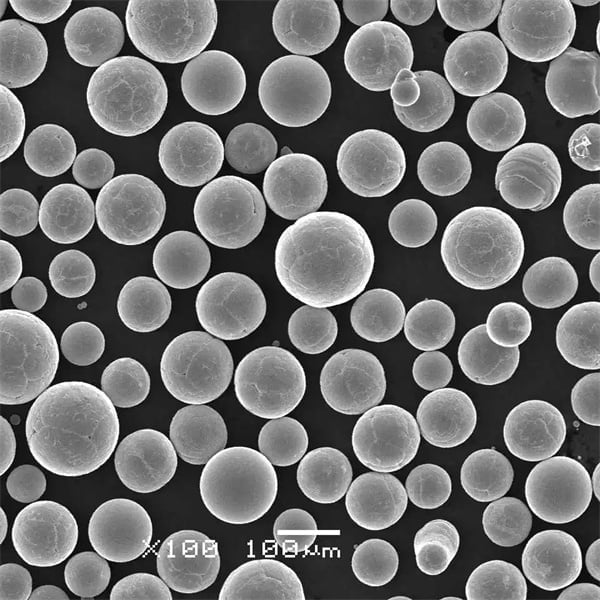
자주 묻는 질문
1. 지향성 에너지 증착(DED)이란 무엇인가요?
DED는 레이저, 전자빔 또는 플라즈마 아크와 같은 집속 에너지원을 사용하여 공급 원료를 녹여 기판에 증착하는 3D 프린팅 프로세스입니다. 이 프로세스를 통해 복잡한 형상을 만들고, 기존 부품을 수리하고, 적층 제조를 할 수 있습니다.
2. DED에 사용되는 일반적인 에너지원 유형에는 어떤 것이 있나요?
DED의 일반적인 에너지원은 다음과 같습니다:
- 레이저: 고강도 광선을 집중적으로 조사하여 원료를 녹입니다.
- 전자 빔: 진공 환경에서 공급 원료를 녹이는 데 사용되는 고에너지 전자.
- 플라즈마 아크: 재료를 녹이고 증착하는 데 사용되는 고온 플라즈마 아크입니다.
3. DED에서 사용할 수 있는 자료의 유형은 무엇인가요?
DED는 다음과 같은 다양한 자료를 사용할 수 있습니다:
- 금속: 강철, 티타늄, 알루미늄, 니켈 합금 등
- 메탈 매트릭스 컴포지트: 세라믹 입자 또는 섬유로 강화된 금속.
- 특정 도자기: 특수 애플리케이션의 경우.
4. DED의 일반적인 적용 분야는 무엇인가요?
DED는 다음과 같은 다양한 애플리케이션에 사용됩니다:
- 수리 및 유지 관리: 항공우주, 자동차, 에너지와 같은 산업에서 마모되거나 손상된 부품을 복원합니다.
- 맞춤형 부품 제조: 다양한 산업을 위한 복잡한 맞춤형 구성 요소를 만듭니다.
- 프로토타이핑: 새로운 디자인 및 제품 개발.
- 압형: 도구 및 금형 제작 또는 수리.
5. DED 기술의 혜택을 가장 많이 받는 산업은 무엇인가요?
DED의 혜택을 받을 수 있는 산업은 다음과 같습니다:
- 항공우주: 부품 수리 및 제조용.
- 자동차: 부품 생산 및 수리용.
- 에너지: 터빈 블레이드 및 기타 중요 부품 수리.
- 의료: 맞춤형 임플란트 및 보철물.
공유
중국 칭다오에 본사를 둔 선도적인 적층 제조 솔루션 제공업체인 MET3DP Technology Co. 당사는 산업용 3D 프린팅 장비와 고성능 금속 분말을 전문으로 합니다.
관련 기사
Met3DP 소개
최근 업데이트
제품

3D 프린팅 및 적층 제조용 금속 분말
문의 정보
- 칭다오시, 산둥성, 중국
- [email protected]
- [email protected]
- +86 19116340731






